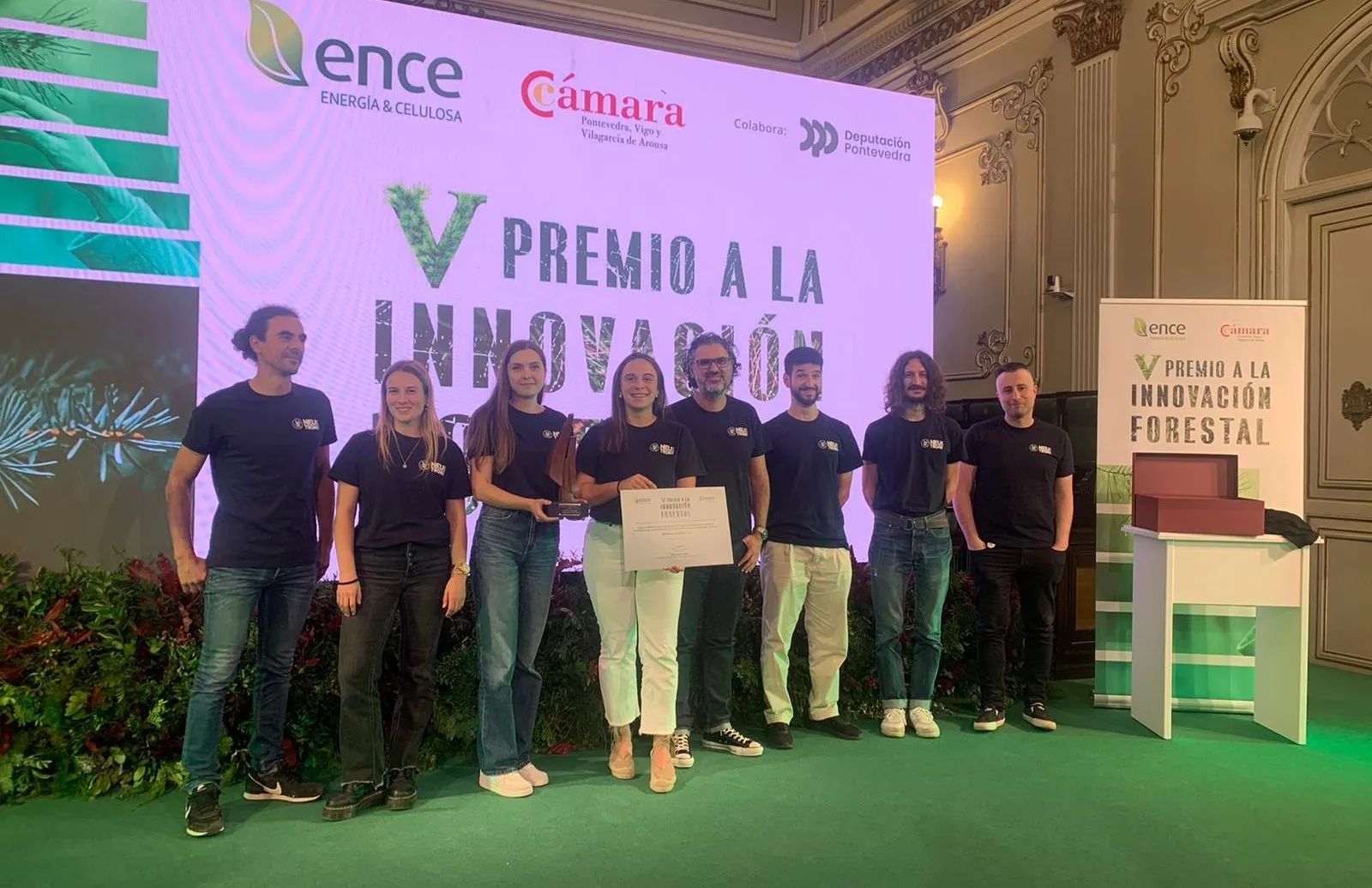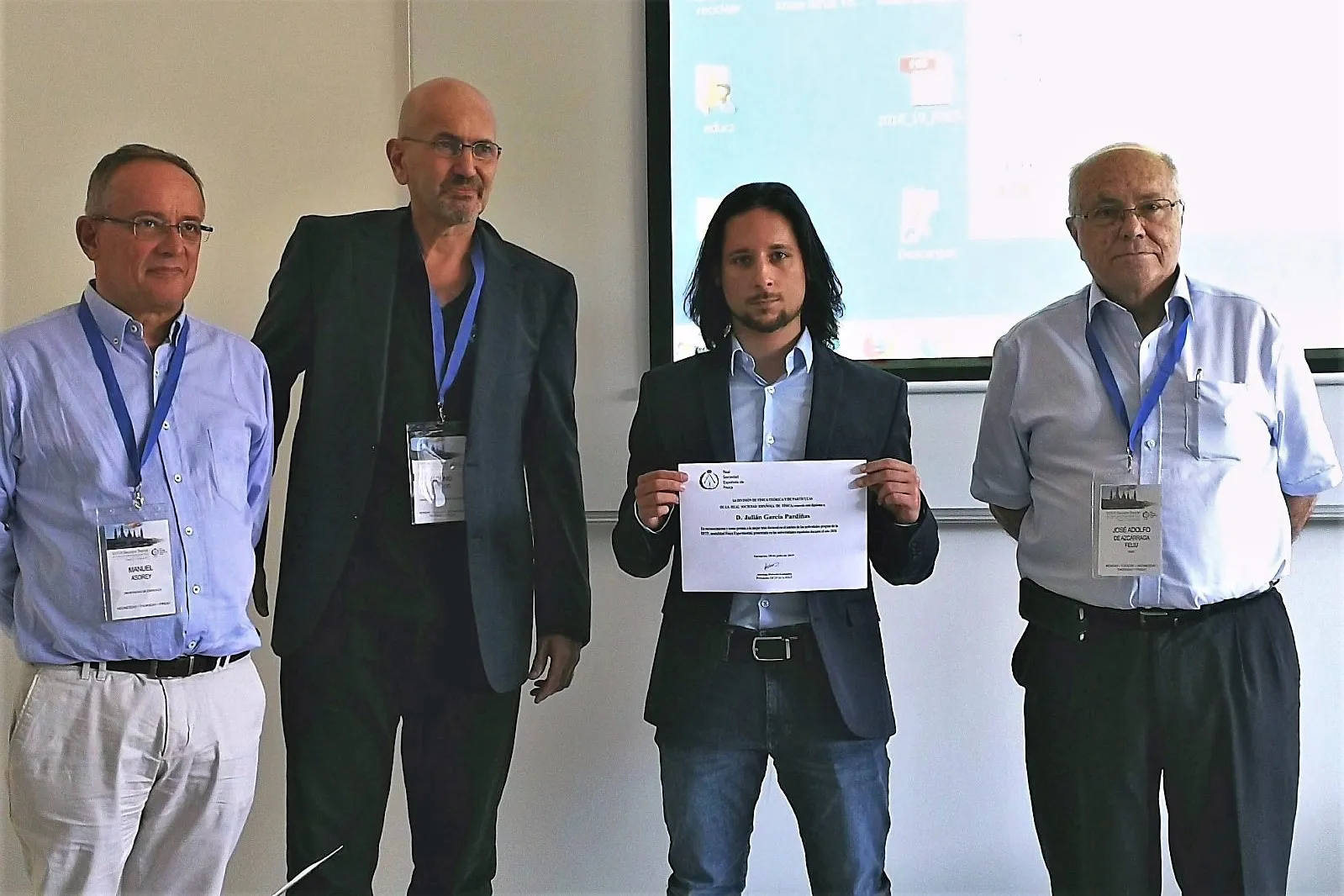Neutron Insights, spin-off do IGFAE, recoñecida coa mellor iniciativa innovadora no V Premio Cámara de Comercio-Ence



22.07.2019

O investigador posdoutoral Julián García Pardiñas recibiu o xoves o I Premio DFTP (División de Física Teórica e de Partículas) da Real Sociedade Española de Física (RSEF), na modalidade “mellor tese en Física Experimental”, polo seu traballo realizado no Instituto Galego de Física de Altas Enerxías (IGFAE) da Universidade de Santiago (USC). Este recoñecemento, entregado no marco da XXXVII Reunión Bienal da RSEF, distingue aos traballos máis sobresalientes defendidos nas universidades españolas durante o 2018 e súmase á brillante traxectoria deste mozo investigador.
Premio de excelencia académica da Xunta de Galicia antes de comezar o grao en Física, mellor expediente da súa promoción, de todo o sistema universitario galego nesta carreira e do Máster en Física Nuclear e Partículas e as súas Aplicacións Tecnolóxicas e Médicas da USC. Tras realizar a súa tese doutoral no IGFAE, cunha axuda FPU do Ministerio de Ciencia, Innovación e Universidades que incluíu estadías no CERN, Julián García Pardiñas recibiu o xoves outro novo recoñecemento: o premio á mellor tese de Física Experimental da División de Física Teórica e de Partículas (DFTP) da Real Sociedade Española de Física (RSEF).
Na cerimonia de entrega celebrada na XXXVIII Reunión Bienal da RSEF a semana pasada, o presidente da DFTP, Antonio Dobado González, e o presidente de RSEF, José Adolfo de Azcárraga Feliu, encomiaron a calidade do traballo presentado por este mozo investigador e salientaron que este novo premio pretende ser un aliciente de calidade para o alumnado de doutoramento deste campo.
Análise do sabor dos mesóns B co LHCb
O Modelo Estándar (ME) da Física de Partículas é a teoría que mellor explica como interactuan as partículas que forman a materia, gobernadas polas forzas elementais da natureza: forza nuclear débil, forza nuclear forte e electromagnetismo. Con todo, o ME deixa cuestións importantes sen resolver. Un dos interrogantes é a chamada estrutura de sabor, unha propiedade dos fermiones —quarks e leptóns- que determina a súa organización en tres familias e como se relacionan. Varios modelos de Nova Física (NF) predín modificacións na estrutura de sabor e desviacións respecto do esperado en certos procesos subatómicos. A tese de Julián, dirixida polos investigadores do IGFAE e profesores da USC Máximo Pló e Juan José Saborido, buscou poñer a proba esta propiedade utilizando medidas do experimento LHCb do CERN, onde chocan protóns a velocidades próximas á da luz, para observar o decaemento de mesóns B e atopar esa nova física capaz de dar as respostas que faltan, por exemplo, sobre a asimetría observada entre materia e antimateria.
Os retos principais da tese foron realizar con éxito un novo tipo de medida moi complexa e levar a cabo dúas análises moi diferentes. No resultado da primeira análise, relacionado coa devandita asimetría entre materia e antimateria, non se atoparon desviacións significativas respecto das do Modelo Estándar, pero desenvolvéronse novas ferramentas —como o procesamento dos datos en tarxetas gráficas GPUs- que serán utilizadas para futuras análises do LHCb. Respecto da segunda análise, centrada nas chamadas anomalías de sabor entre tauóns e muóns, sentouse a base para este tipo de medida, conseguíronse resultados preliminares e deseñouse o plan para realizar a medida final no futuro. Na actualidade, Julián é investigador posdoutoral na Universidade de Zürich grazas a unha colaboración iniciada durante esta etapa.
Imaxe: (de esquerda a dereita) Manuel Asorey Carballeira, vicepresidente da DFTP da RSEF; Antonio Dobado González, presidente da DFTP da RSEF, Julián García Pardiñas; e José Adolfo de Azcárraga Feliu, presidente da RSEF.